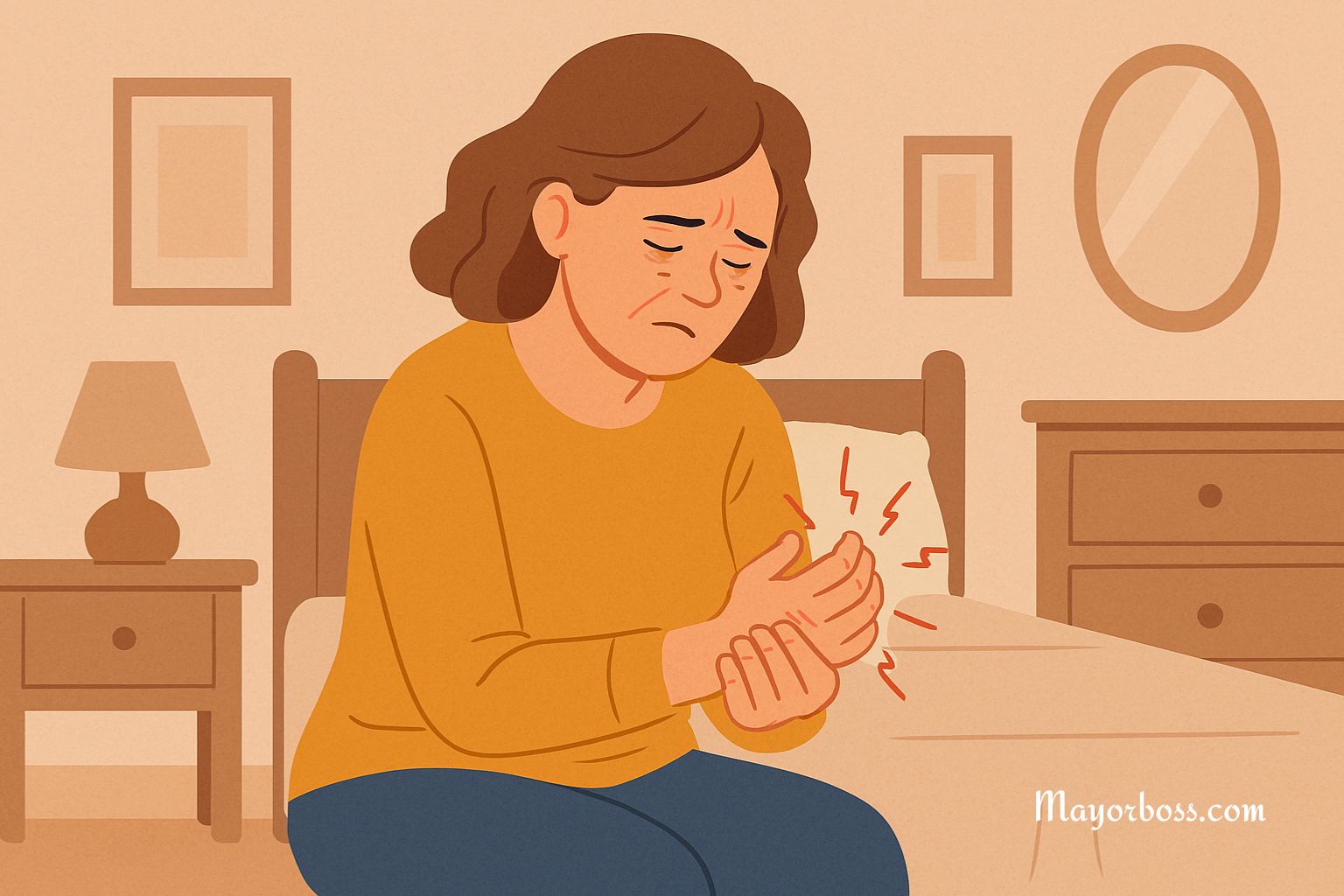Early Signs of Rheumatoid Arthritis
Rheumatoid arthritis (RA) is an autoimmune disease. This means the immune system, which normally protects the body from illness, mistakenly attacks healthy joints. RA causes inflammation, pain, and swelling—usually in the hands, wrists, and feet. Over time, it can damage joints and other parts of the body. The earlier it’s diagnosed, the better the chance to manage it effectively.1
Here are some of the most common signs that may suggest rheumatoid arthritis.

Joint Pain and Stiffness
One of the first signs is pain or stiffness in the joints. It often starts in the small joints—especially in the fingers and wrists. You might notice the pain on both sides of the body. This is known as symmetrical joint pain. It may be mild at first, but it tends to get worse over time if not treated.
Morning Stiffness Lasting Over an Hour
Most people with RA feel stiff in the morning.2 This stiffness can last an hour or more and may slowly improve throughout the day. This is different from osteoarthritis, where stiffness usually wears off much quicker.
Swollen Joints
Inflamed joints may look puffy or feel warm to the touch. The swelling can make it hard to move or bend the joint. It often comes and goes, but during flare-ups, it becomes more intense and noticeable.
Fatigue and Weakness
RA doesn’t just affect the joints. Many people feel very tired even when they’ve had enough rest. This fatigue can come on suddenly and feel overwhelming. It might be one of the earliest symptoms before joint pain even begins.
Low-Grade Fever
Because RA is an inflammatory condition, it can sometimes cause a low-grade fever. It usually happens along with flare-ups of joint pain and swelling. If you’re often feeling warm or feverish for no clear reason, it might be linked to RA.
Weight Loss Without Trying
Unintentional weight loss can happen with RA. This is due to ongoing inflammation in the body, which can affect your metabolism and appetite.3 If you’re losing weight without changing your diet or activity level, it’s important to get checked.
Numbness or Tingling
RA can affect the nerves around your joints. For example, swelling in the wrist can press on the median nerve and cause carpal tunnel syndrome. This may lead to numbness or tingling in your fingers, especially at night.
Joint Warmth and Redness
Inflamed joints often feel warm. They may also appear red. These signs usually happen during flare-ups and may go away when inflammation decreases. They are clear signs that the immune system is overreacting in that area.
Limited Range of Motion
As RA progresses, joints may become harder to move. You may notice it becomes more difficult to bend, stretch, or rotate certain joints. This can make simple tasks—like opening a jar or brushing your hair—more difficult.
Small Bumps Under the Skin (Rheumatoid Nodules)
Some people (up to 20% of patients) with RA develop firm, round lumps under their skin. These usually appear over pressure points like the elbows, fingers, or heels. They are called rheumatoid nodules and are not usually painful, but they can be a sign of a more severe disease.4
Eye or Mouth Dryness
RA can sometimes affect more than just joints. It may also cause dry eyes or a dry mouth. This is known as secondary Sjögren’s syndrome. If your eyes feel gritty or your mouth feels dry often, RA may be the reason.
Chest Pain or Shortness of Breath
RA-related inflammation can affect the heart and lungs. This can lead to chest pain, a dry cough, or trouble breathing. These symptoms are serious and require medical attention right away.
When to See a Doctor
If you notice ongoing joint pain, swelling, stiffness, or fatigue that doesn’t improve, it’s time to see a healthcare provider. Early diagnosis allows for better control of the disease. Blood tests, imaging, and a physical exam can help confirm if you have RA.
